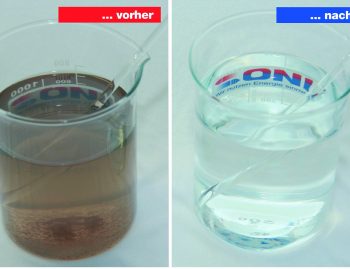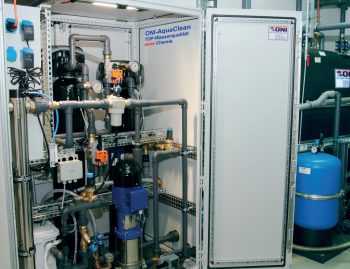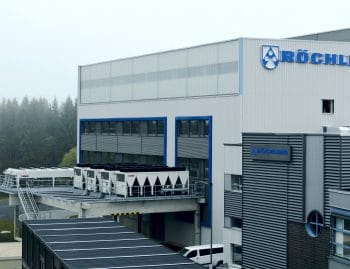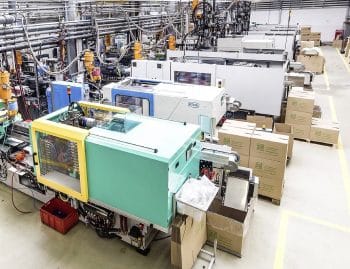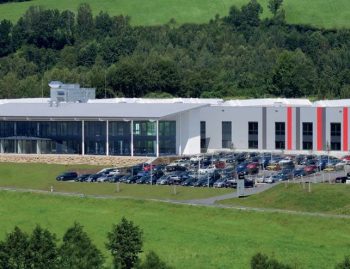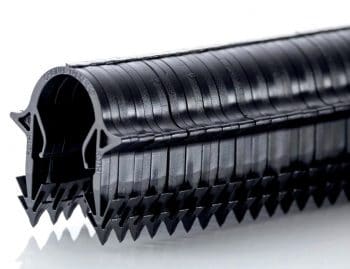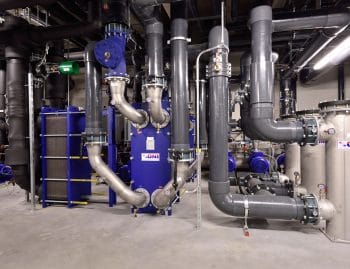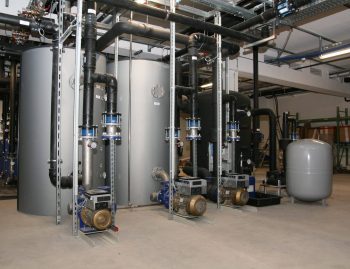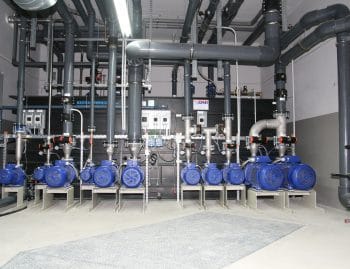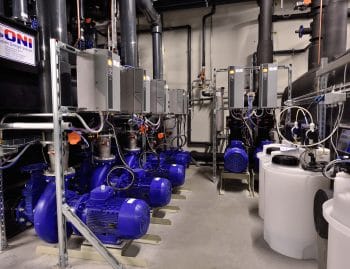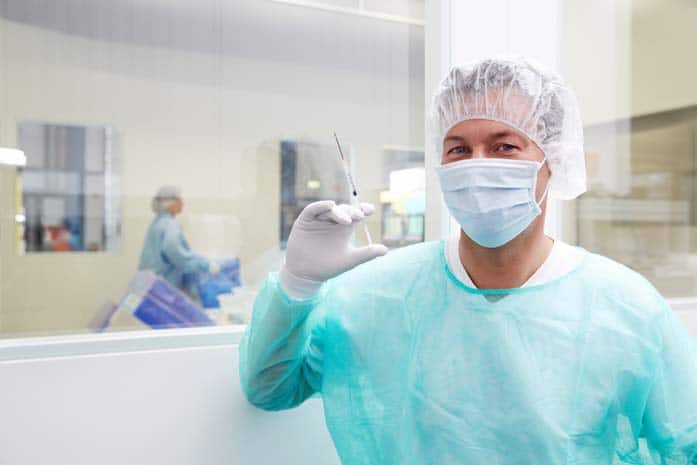
Clean room technology and energy penetration hand in hand
Holistic solutions, including tool development and optimization, are the hallmarks of the Sauerland-based injection molder AFK. The medical technology sector is currently being further expanded, and a new ISO 7 class clean room has been created for this purpose. This was associated with the task of operating the clean room in a particularly energy-saving manner and thus supplementing the energy-saving concepts of the other injection moulding technology.
Sensitive production areas in which, in addition to particle concentration, defined values for air temperature, pressure and humidity must also be maintained and which are also subject to regular, certified testing, are usually housed in encapsulated clean rooms. The requirements for their planning, execution, operation and testing are laid down in VDI Guideline 2083, EU GMP guidelines, other national or customer-specific guidelines, among others. AFK Kunststoffverarbeitung uses a complete ONI clean room system due to the high quality and hygiene requirements for parts produced in medical technology. In this ISO Class 7 clean room - which corresponds to the older US Standard 10,000 - the manufactured parts are also packaged. When developing the concept, the operational reliability of the cleanroom systems had absolute priority, but low operating costs are also a must. In order to keep the energy consumption for the clean room as low as possible, a special filter technology was used and a particularly favourable air distribution was realised. "As an energy-intensive operation, low energy costs are of particular importance with regard to securing the future. As a partner in this field, ONI also provides services such as support in the procurement of subsidies," says Managing Director Andreas Franke, describing the situation.
Drastically reduce refrigeration machine operation
To cool the injection moulds, a cooling capacity of currently 130 kilowatts at a constant cooling water temperature of 15 degrees Celsius must be provided all year round via a supply network. Today, electrically driven chillers are still used in many cases throughout the year to generate the cooling water, which leads to considerable costs due to the high power consumption. The cooling water concept at AFK, on the other hand, limits the use of chillers to summer operation and a small part of the transition period.
The cold water for the cooling of tools and ventilation units is generated in the transition and winter time in a cost-saving way via a so-called winter relief. The heart of this winter relief is a glycol-free, patented air-water heat exchanger that uses the free outside air to cool down the cooling water. If the outside air temperature is below the cooling water return temperature, the cooling machines are relieved. In concrete terms, this means that pre-cooling takes place via the externally installed heat exchanger, while the required residual cooling continues via the chiller. If the outside air temperature reaches a value that is only a few degrees below the cooling water flow temperature, the chiller switches off completely and the heat exchanger takes over the cooling water recooling alone. Practical experience shows that thanks to the winter relief in most cases over 70 percent of the operating time the use of chillers is dispensed with.
Cooling water supplies free heating heat
In order to heat a company with several thousand square meters of production, office and storage space in the transition and winter months, a lot of natural gas or heating oil is usually required. These costs have a significant impact on production costs. In the energy supply concept developed by ONI, energy used once is used twice for the AFK site in Finnentrop. The division of the cooling water system into two closed circuits makes this possible. The basis of the new heating energy concept for AFK is the use of waste heat from the oil cooling of the injection moulding machines. Many plastics processors today still dissipate this waste heat into the atmosphere unused via recooling systems. However, the temperature level of 35 degrees Celsius in the cooling circuit return flow, which is sufficient for the oil coolers of the machines, is ideal for heating rooms. In this case, special hall and office heaters supply a large part of the approximately 5,000 square meters of office and storage space with free heat. During production times, around 200 kilowatts of power are permanently available for heating purposes. This type of waste heat utilisation has a financially interesting double benefit for the operator: Waste heat, which previously had to be recooled at great expense, becomes free heating energy and massively reduces heating costs, which is particularly valuable in times of rising energy costs.
Low-temperature heating technology offers an additional positive effect: office and hall heaters can achieve a favourable temperature distribution in the room. The relatively small temperature difference between the heating heat output and the room air temperature leads to a particularly good, homogeneous mixing in the room and a pleasant room climate.
Energy management ensures energy savings
Even the most powerful system needs to be optimally organized if it is to get by with a minimum of energy. For this reason, a dynamic management system developed by ONI is responsible for organizing the energy supply at AFK. The focus is on a PLC module with the energy-optimizing system software. This is where all information on the system status of the entire system converges, is evaluated and from here the system components receive all the necessary commands. For example, the control system recognizes when it is possible to relieve the chiller and automatically switches on the free cooler. This ensures that the winter relief remains active for as long as possible because every hour the chiller remains switched off is worth cash for the operator.
The situation is similar with the organisation of heat recovery: if heating is required in a company area, the corresponding output from the machine cooling circuit is made available. The resulting reduction in recooling capacity then results in a reduction in the free cooler capacity, which also saves electricity.
Money from the Goverment helps
In many commercial refrigeration systems, there is a great deal of energy-saving potential that can be exploited cost-effectively from a business point of view. The "Impulsprogramm für Klimaschutzmaßnahmen an gewerblichen Kälteanlagen" (Impulse Programme for Climate Protection Measures in Commercial Refrigeration Plants) launched by the Federal Ministry for the Environment, Nature Conservation and Nuclear Safety offers an additional incentive for the refurbishment of old, inefficient refrigeration plants. Renovation measures that result in a considerable improvement in the energy efficiency of refrigeration plants are subsidised with non-repayable subsidies. This programme also offers the possibility of promoting a heat recovery measure in conjunction with refrigeration plant optimisation. For an integrated refrigeration system optimisation, there are two types of funding available via a so-called basic and bonus promotion. "ONI experts drew our attention to the funding opportunities and actively supported us in the application process. That's what we mean by valuable cooperation based on partnership," praises commercial manager Daniel Struwe.
The AFK project is an example of how holistic energy concepts can open up the possibility of particularly economical and thus cost-saving energy generation. "With the energy concept we have now implemented, we have created a situation in which we can produce energy-efficiently and economically. In this way we strengthen our competitiveness and at the same time make a significant contribution to securing the future," is how Andreas Franke sums up the project implemented in his company.





